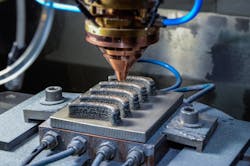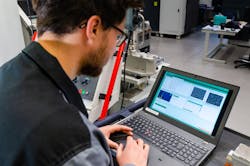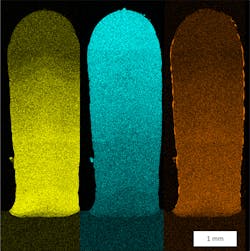FutureAM project discovers superalloys for additive manufacturing
Engineers at the Fraunhofer Institute for Material and Beam Technology (Fraunhofer IWS; Dresden, Germany) have refined laser powder buildup welding over decades to allow more materials to be applied in additive manufacturing. In this procedure, a system feeds various filler powders into a process zone—there, a laser melts the powder and deposits it on a workpiece surface. As a result, the desired part is generated in a layer by layer process.
"One of the advantages of this additive procedure is that we can adapt the process very flexibly to the requirements of high-performance materials," explains Michael Müller, Fraunhofer IWS project administrator. In this way, it is also possible, for example, to print nickel-based alloys that are difficult to weld and process using traditional methods. However, this only works if the temperature, powders, feed rate, and other parameters are correct.
Within the framework of Fraunhofer's futureAM – Next Generation Additive Manufacturing project, Fraunhofer IWS engineers are recording numerous sensor data with very high sampling rates for this purpose. However, this generates large amounts of data (big data) that are difficult for people to understand.Aircraft engines, for example, could work more efficiently and at higher temperatures if most materials were not already failing at temperatures of around 1200°. Admittedly, there are materials that can withstand such high temperatures, but they are very cost-intensive and difficult to process using traditional methods. Additive manufacturing is intended to solve this dilemma and could help to achieve a more cost-effective design.
"Using laser powder buildup welding, we can feed different powders into the process zone simultaneously or successively with precisely adjustable feed rates," Müller explains. "Designing an entire component out of a singular material is not very effective since the component is not exposed to the same heat at all points."In the futureAM project, Fraunhofer IWS and five other Fraunhofer Institutes are pooling this technology and further expertise to push additive manufacturing to a new level. By summer 2020, they want to integrate all their expertise into the additive manufacturing process chain and demonstrate it on realistic components.
For more information, please visit iws.fraunhofer.de.


